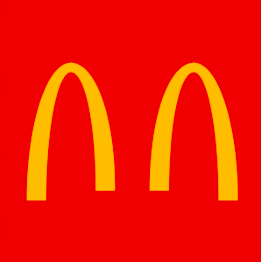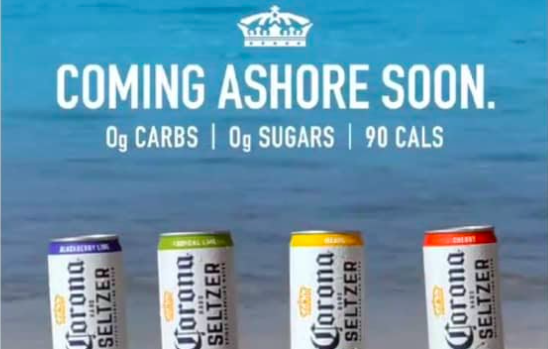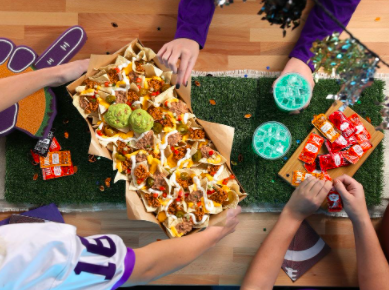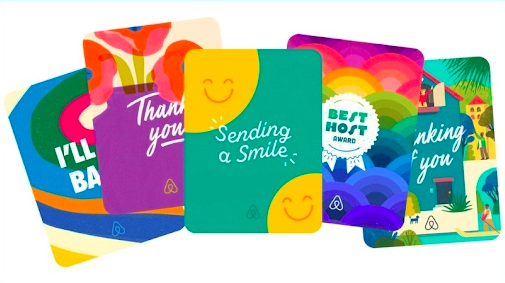2020 presented challenges in marketing that a lot of us didn’t see coming. While crisis communication plans are a must, most don’t include precautions for a global pandemic.
While some brands rose to the challenge, others took a bad situation and made it worse.
A marketing project that falls flat is one thing, but a few of these unbelievably bad marketing campaigns of 2020 might keep customers away through the new year.
Here, we’ve gone through some of the roughest marketing campaigns of 2020. This isn’t an exercise in ridicule, but rather a helpful way to learn from some of the brands that definitely moved to damage control mode after these flawed approaches. Don’t just read through these examples. Take note of elements that might exist in your marketing plans. Let these hard-learned lessons be your guide to a better strategy.
The challenges of 2020 aren’t going away. We’re still all reeling from the COVID-19 outbreak and its impact will be felt for years to come. Your marketing plan is going to include considerations learned in 2020 for the foreseeable future, so it’s important to keep good and bad lessons in mind when shaping marketing plans for the future.
Without further delay, let’s get into some of the roughest 2020 marketing campaigns that left consumers and peers in the industry scratching their heads.
1. McDonald’s Backtracks on its Golden Arches Campaign
 Image Credit: McDonald’s via CreativeReview.co.uk
Image Credit: McDonald’s via CreativeReview.co.uk
Early in the pandemic, a phrase we didn’t yet have much familiarity with became one of 2020’s most popular two-words: social distancing.
If you recall back in March 2020, we didn’t yet know if masks helped. We weren’t sure if we should be spraying down our groceries with disinfectant. But we did know that staying apart helped curb the spread of the Coronavirus.
McDonald’s and their hired Brazilian agency, DPZ&T, decided to shed light on social distancing by separating the two Golden Arches famously associated with their fast food restaurant.
The decision to change the company’s logo was not made lightly. The impact of its message was intended to highlight what we could all be doing to make a positive impact on public health.
Instead, the public detested the move as all show and no substance.
Tweet: https://twitter.com/MobileAdsGuru/status/1242584940270833666
Many social media users expressed their negative reactions to the Golden Arches campaign with accusations that McDonald’s wasn’t interested in supporting its team members.
Many reflected on interactions at the fast-food restaurant where employees didn’t seem to be practicing sanitation habits or provide customers with a safe drive-thru experience.
The lack of a public-facing plan towards handling COVID-19 for employees and customers was a lesson many marketing professionals learned early on in 2020.
Brands like McDonald’s who attempted to show solidarity through marketing content rather than transparency learned quickly that talking the talk wasn’t going to cut it.
Real success in marketing strategies during 2020 would come way of clear messaging, shared safety guidelines, and safety standards that keep employees and customers in mind.
2. Corona Seltzer and the Poorly Timed Marketing Push
 Image Credit: Corona
Image Credit: Corona
Hard seltzers are everywhere now. It’s no wonder so many beer companies, like Corona, decided to get in on the game made famous by Truly and White Claw.
That said, launching a new line of products is tough. Especially during a global pandemic. And especially when your brand name happens to be similar to a new virus sweeping the globe.
When the COVID-19 pandemic put much of our lives on hold, travel was one of the first things to go. That meant a likely stop to vacations too.
As the end of winter led to a new season, many wondered if Spring Break would be impacted. Spoiler alert: it wasn’t, and much to the detriment of popular destination communities.
Nevertheless, Corona and their ad agency Constellation launched Corona Seltzer in 2020 with the tagline, Coming Ashore Soon. Yikes.
Aside from the clear association with COVID-19’s arrival to North America via overseas travel, Corona’s marketing strategy highlighted Spring Break activities heavily. Some of which they still ran to promote the new product line.
This is a great example of a brand deciding too much work was done to completely abandon a marketing campaign. As it turns out, losing time and resources spent to develop this campaign would have likely been less harmful than running it as it was.
After the ads debuted, Constellation stock dropped 6% and sales for Corona Seltzer were well under expectations. For everyone involved, it was a failure.
This goes to show how crucial it is to keep in mind the lasting impact of a marketing campaign. Yes, abandoning a well-funded and developed strategy is tough, but you have to ask yourself whether the alternative is worth it.
3. Taco Bell Launches Nachos Party Pack at Possibly the Worst Time

Image Credit: Taco Bell
Back in 2019, Taco Bell chose select locations to test sales of a new Nachos Party Pack. For a low price, you can feed many mouths. Sounds great right?
The only problem is that the launch of their new item was set to come on December 26, 2020. Yes, this was after the holidays where we were all asked to stay home if possible and avoid get-togethers.
The problem is that the holidays were only part of the problem in December 2020. Many areas were experiencing record hospitalizations from COVID-19 patients. LA County was even turning away patients arriving at area hospitals.
All of this was happening and the launch, which was announced back in September, was still set to go. Ads for the Nachos Party Pack even showed groups of people together inside eating.
TV Ad: https://www.ispot.tv/ad/twSu/taco-bell-nachos-party-pack-delivery-spend-and-add-more
At a time where buffets and indoor dining was limited to help curb the spread of COVID-19, an ad depicting get-togethers of friends sharing a meal from the same box of nachos was probably not the best move.
Simple changes like depicting families enjoying the box would have fit better, but Taco Bell stayed with their original plan.
Sometimes a full refresh of a marketing campaign seems taxing, tiring, and maybe even wasteful when it comes to time and money.
Still, it’s almost always worth it. Taco Bell immediately got criticized for not seeming aware of the current social climate surrounding get-togethers.
It wasn’t like they didn’t know this was the spirit of their ads. It’s front and center in the name of the product. A Nacho Party Pack immediately brings to mind parties.
They even named things like holiday parties and sports watching parties as reasons to take advantage of their new deal.
The trick with a launch like this in 2020 is that it seems to encourage doing what health officials are asking everyone not to do. Everyone has free will, but plenty of people saw the ads and wondered why sharing food with others at a time where COVID-19 seemed to be getting worse was a good move.
The answer: it wasn’t a good move.
Confusing ads that take attention away from a product and put the consumer’s mind on things like pandemics, danger, and fear are never going to reach the goals you hope.
4. Burger King Ruins our Appetite

In 2020, many felt safer eating at home when they decided to let someone else do the cooking. Some states didn’t even allow indoor dining.
The takeout movement of 2020 led to many relying on delivery and drive-thrus in a big way. Fast food became an even more competitive market than usual.
These industries are a great example of how to properly pivot during unexpected events in the world.
There’s no doubt that brands like GrubHub and DoorDash grew in a big way during 2020. They couldn’t help that a global pandemic was happening.
They could, however, take the dismal state of the world and try to work tangible solutions into their efforts. Solutions like offering no delivery charge for local restaurants on the platform.
There’s no doubt that chain restaurants recognied the power of takeout and drive-thru services as well. Those two things are integral to the fast-food industry. This led to a very competitive year for all businesses in the sector.
As companies tried to jockey their way into a stronger position, Burger King decided to focus on their natural ingredients. Good idea, right?
Well, it is if you don’t rely on mold to prove that your burgers are fresh.
Ad: https://www.youtube.com/watch?v=oSDC4C3_16Y&ab_channel=BURGERKING
Burger King moved to offer plant-based options and a more diverse menu over the past few years. It’s working out well for them.
The concept of a burger with no artificial preservatives is definitely worth highlighting. The only problem is that they did so by showing their food get moldy.
While, yes, this does prove you don’t use preservatives, it also really doesn’t make me thing, “I want a Whopper.”
Intentions are only part of planning a successful marketing campaign. The execution comes from ensuring you’ve considered how consumers will react.
I don’t know how they didn’t catch on that this doesn’t give us much of a hankering for Burger King.
If anything, I don’t have much of an appetite at all now.
5. Airbnb Loses Sight of Housing Crisis While Trying to Support Its Hosts

Image Credit: Airbnb Community Blog
The most difficult aspect of 2020 was keeping things in perspective. There’s no doubt that Airbnb hoped to inspire positivity for its hosts with its Kindness Card campaign.
The effort called on Airbnb customers to send a “thank you” card to hosts on the platform. Included was an area where you could add a donation to their business.
While it’s true that the travel industry took a huge hit during COVID-19, this effort to help those who rent their home to others was a bit shortsighted.
Many pointed out that amidst eviction moratorium and record unemployment that calling for donations to rental owners might not look very “aware.”
As expected, the effort didn’t earn Airbnb a lot of kudos. At a time where they should have been pivoting their efforts in positive ways, this didn’t bode well for an already disappointing 2020.
Again, intentions aren’t everything. Executing a proper marketing campaign comes down to everything from what people will think to how you introduce the campaign to the public.
Don’t let these bad marketing campaigns of 2020 scare you. Instead, let’s go over a few lessons we can take away from these worst case scenarios.
After all, the troubles of 2020 didn’t magically go away when the clock struck midnight on New Year’s Eve.
There’s still a lot of work to be done to make 2021 the first year of real recovery following last year’s endless stream of bad news.
How to Avoid Disasters Like These Unbelievably Bad Marketing Campaigns
In hindsight, these bad marketing campaigns seem like no-brainers. A lot of them leave us wondering how they ever made it as far as the implementation phase. Even in years without a global pandemic, these marketing mistakes still happen.
During strategy meetings, a few things can happen that lead to marketing disasters like these. Most notably, a lack of diversity in opinions and insights can let groupthink lead the way straight to a bad campaign.
The integrity of a brand, its products, and even its clients can deteriorate when a bad marketing strategy does damage in the way these campaigns did. Sometimes, the solution to avoiding these problems is as simple as hiring a trusted and established marketing agency.
A mistake is only a mistake if you don’t learn something from it. Then, it becomes a lesson. We can learn a lot of lessons from 2020’s most miserable marketing campaigns.
By learning from the mistakes of 2020 that others companies made, you can start to shape your future plans. With the help of marketing experts with experience in assisting brands reach their full potential, 2021 could be more than a rebound year.
It could be your year to end up on a best marketing campaigns list. Better than the alternative, right?
Common sense, creative thinking, and not copying the mistakes of the examples above. That’s a great start to what could be a great year for your business.

